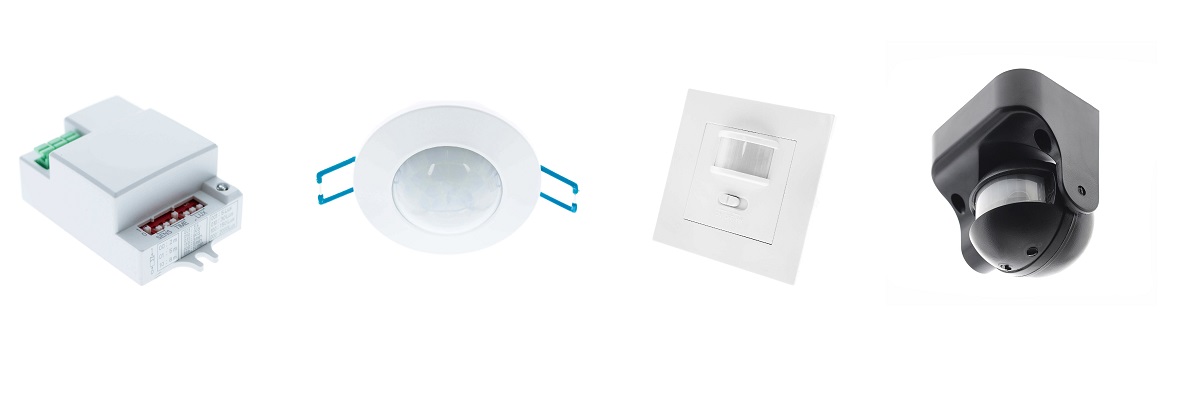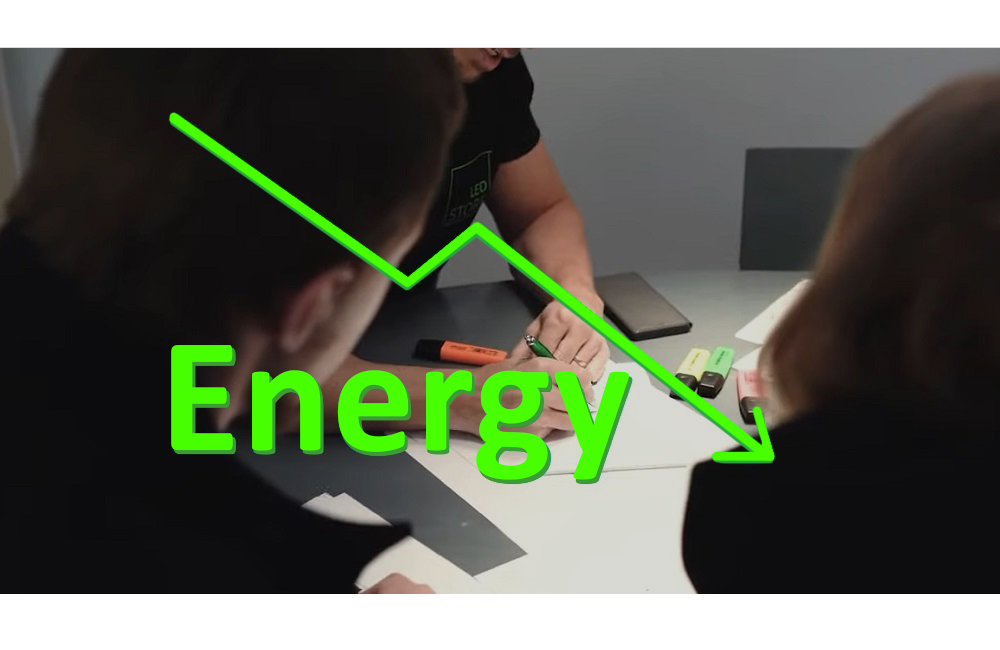Summarize
- LED technology is the most energy-efficient choice for lighting design
- Lighting control systems, such as motion sensors, save energy
- Using natural light to improve energy efficiency in lighting
- Combining different lighting technologies optimises energy savings
- Working with professionals to ensure energy-efficient lighting
The importance of lighting design in terms of energy consumption is often underestimated, but expert implementation can make a real difference. The purpose of this article is to shed light on how the right lighting design can reduce energy consumption while saving money and the environment.
LED is energy efficient
Let’s start with light sources: LED technology is the most common energy-efficient choice today. Energy-saving light bulbs and fluorescent tubes are also still common, but the energy efficiency of LED lamps is superior. This is because LEDs convert electricity into light more efficiently and have a much longer lifetime. And in future, technologies other than LED will not even be available for purchase, as the EU has banned other technologies in its energy reform, while a new energy label for LED lights was announced.
Lighting control
Lighting control systems are another crucial factor in optimising energy consumption. For example, motion sensors, timers and dimmers save energy by automating the use of lights. They react to the environment, such as the presence of people, external light or the time of day.

Consider natural light lighting in the design
It is particularly important to take into account the location of windows and the properties of glass surfaces when designing lighting. Natural light is the best and most energy-efficient source of light, so harnessing it is key. Depending on the position and shape of the windows, it can be decided how to direct daylight into the interior and how to avoid excess light.
Combining techniques
Combining different lighting technologies is also beneficial in terms of energy savings. For example, the right combination of general lighting and efficient lighting can help to achieve pleasant and energy-efficient lighting. The colour rendering properties of light should also be taken into account, as they affect the atmosphere and energy efficiency of a space.
Be on the move early
It is also important to consider the energy efficiency potential of lighting design already at the building design stage. The architecture and design of a building can have a significant impact on the energy consumption of lighting. For example, the orientation of a building, the size and design of windows and energy-efficient glazing all affect the amount and quality of natural light indoors.
Work together
Lighting design for energy savings therefore requires taking into account many different aspects and factors. For the design process to be successful, it is important to work with professionals in the field, such as lighting designers, architects and electricians. Their expertise ensures energy efficient, functional and comfortable lighting that best serves the needs of people and the environment.
Industrial lighting
In addition to domestic and public spaces, energy efficient lighting design is very important for industrial and outdoor lighting. Energy consumption in industrial plants and warehouses can be significant, and with the right lighting solutions, significant savings can be made. For example, energy-efficient lighting, such as LED hall lights, can reduce energy consumption and improve safety at work.
Environmentally conscious lighting
Lighting design should always take into account the environmental impact. In addition to improving energy efficiency, the life cycle of materials and recycling opportunities must be taken into account. LED lights, for example, have a long lifetime, but their manufacturing and recycling should also pay attention to sustainability.
Energy-efficient outdoor lighting
Energy efficiency in outdoor lighting is also a key element of sustainable urban design. Lighting in public areas such as parks, streets and squares should be safe, comfortable and energy efficient. Here again, LED luminaires are often the best choice due to their long life and energy efficiency.
One important aspect of outdoor lighting is reducing light pollution. Excessive and poorly directed lighting can harm nocturnal animals, affect people’s sleep quality and block the view of the starry sky. Energy-efficient luminaires and proper lighting design can help reduce light pollution and save energy at the same time.
How does lighting design affect energy consumption in practice?
1. How can lighting design contribute to energy savings?
Lighting design can contribute to energy savings, for example by choosing energy-efficient luminaires, using natural light, optimising the amount of lighting according to the use of the space and using intelligent lighting control systems.
2. What types of energy-efficient luminaires and lamps are available on the market?
Energy-efficient luminaires and lamps include LED bulbs, LED tubes and dimmable LED lamps. These technologies can save energy and reduce the carbon footprint.

3. How do the quantity and quality of lighting affect energy consumption?
Optimising the quantity and quality of lighting is important for energy consumption. Unnecessarily high lighting intensity can increase energy consumption and costs. High-quality lighting can improve the comfort and efficiency of spaces while keeping energy consumption at a reasonable level.
4. What kind of lighting control systems exist to reduce energy consumption?
Lighting control systems, such as motion sensors and timers, can reduce energy consumption by adjusting the need for lighting according to the situation. Dimmers and intelligent lighting control systems such as DALI can also help save energy.
5. How can the use of natural light contribute to energy efficiency in lighting design?
Using natural light in lighting design can improve energy efficiency, for example by designing the windows and interiors of a building to maximise natural light penetration. Light-directing structures, such as louvres and light guides, can also help to improve energy efficiency.
6. How has LED technology changed the energy efficiency of lighting design?
LED technology has revolutionised energy efficiency in lighting design, as LED lamps consume significantly less energy than traditional incandescent and halogen lamps. They also have a longer lifespan, which reduces environmental impacts and costs.

7. What legislation and standards are in force regarding energy efficiency in lighting design?
Legislation and standards on energy efficiency in lighting design include the EU Energy Labelling Regulation, the Ecodesign Directive and national regulations such as Part D5 of the Finnish Building Code, which deals with the energy efficiency of lighting.
8. How can reducing energy consumption in lighting design affect the carbon footprint?
Reducing energy consumption in lighting design can have a significant impact on the carbon footprint, as lower energy consumption means less use of fossil fuels in energy production (if electricity production is based on fossil fuels). This in turn reduces greenhouse gas emissions and helps mitigate climate change.

9. What are the future trends in lighting design for energy efficiency?
Future trends in lighting design for energy efficiency may include more energy-efficient luminaires and light sources, intelligent lighting control systems that learn user habits and optimise lighting levels, and closer integration of architecture and lighting design to find energy-efficient solutions.
10. How can lighting designers work with building and electrical designers to improve energy efficiency?
Lighting designers can work with building and electrical designers to improve energy efficiency, for example by designing spaces to take energy efficiency into account at the design stage.
This can mean, for example, making the most efficient use of natural light, choosing energy-efficient luminaires and systems, and integrating lighting control systems with other building systems. Cooperation and exchange of information between different design disciplines are key to finding and implementing energy-efficient solutions.
Lastly
Energy-efficient lighting design is not just about reducing energy consumption, it can also improve the comfort and well-being of spaces. High-quality lighting solutions bring comfort to everyday tasks, make spaces more attractive and have a positive impact on people’s well-being.
Energy-efficient lighting design is becoming increasingly important for sustainable development and the fight against climate change. The integration of renewable energy sources, such as solar and wind power, into lighting systems can further improve energy efficiency and reduce the use of fossil fuels.
Overall, the goal of energy-efficient lighting design is to create functional, comfortable and sustainable lighting solutions that take into account both people’s needs and the well-being of the environment. This requires a wide range of skills and cooperation with professionals from different fields. Finland has many experts who can help implement energy-efficient lighting solutions and thus contribute to sustainable development and the fight against climate change.
Led lighting expert
LedStore has been a specialist in Led lighting since 2010.
We have our own product design, so our products are technologically state-of-the-art.
We focus on light colour temperature controlled and high colour rendering index lights.
We do around
500 lighting designs in a year.
We offer a service of custom made led strips, i.e. custom made led light strips in profile.
Also installed.
Remember that we are always ready to offer our help to you along the way, by email (myynti@ledstore.fi) and by phone (045 251 4510).
As always, feel free to share photos of your own projects on social media at ledstore.fi at Instagram and ledstore.fi at Meta.
We love to see the cool things done by our LEDs, and it also helps to provide inspiration for those who are not sure about the power and awesomeness of LEDs.
Did you know that we already have over 3500 pictures of our LED installations in our Gallery!
Gallery of Led lights:
Product gallery: Pictures of products in different installation locations
Indirect light: Indirect light in different spaces
Room-specific: Light in different rooms
References: Complete houses that have been photographed


